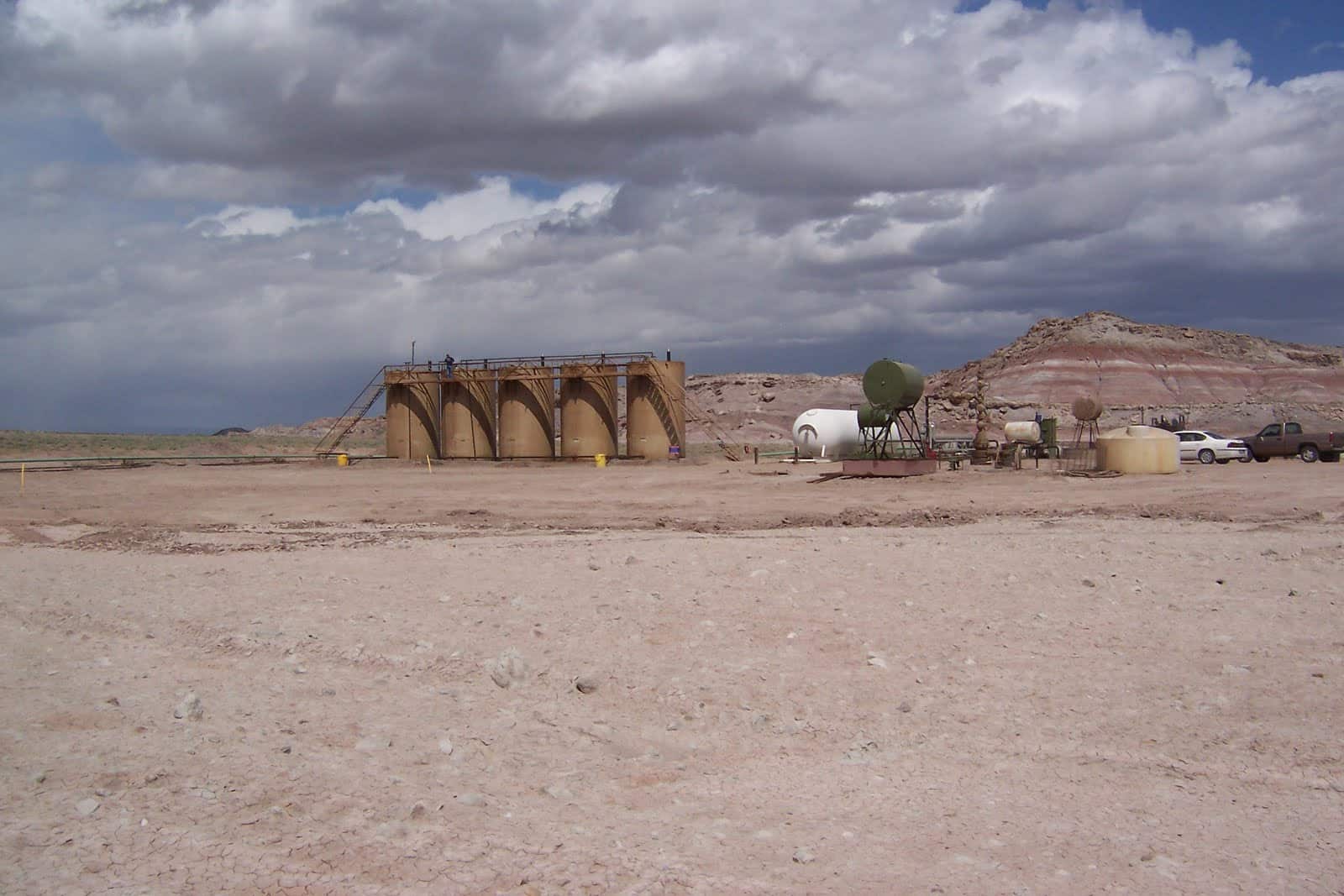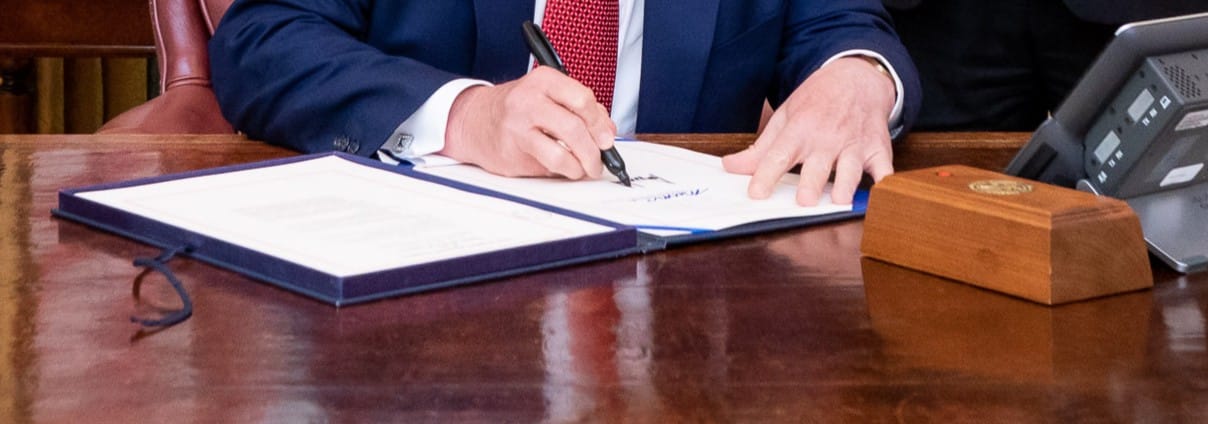Please listen to the podcast using the link below.
NY Times “The Daily” Transcript
This transcript was created using speech recognition software. While it has been reviewed by human transcribers, it may contain errors. Please review the episode audio before quoting from this transcript and email transcripts@nytimes.com with any questions.
Michael Barbaro
From “The New York Times,” I’m Michael Barbaro. This is “The Daily.”
[MUSIC PLAYING]
Amid a growing threat from rivals, like China, the United States military is determined to invest in new forms of defense and abandon those that no longer meet its needs. One of those is a combat ship rife with flaws. Today, my colleague, Eric Lipton, on why getting rid of that ship has proven so unexpectedly difficult.
[MUSIC PLAYING]
It’s Monday, February 13.
Eric, tell us about these warships that you have been investigating and why it is that the US government ordered them in the first place.
Eric Lipton
So it really goes back to the September 11, 2001 attacks when the United States was thinking about new types of enemies that it was going to be facing into the future. And it was concerned about rogue states, smaller, perhaps non-country actors that were coming after Navy assets. And so it needed a new kind of a ship that was really fast that could travel in shallow waters that can search for enemies in the Middle East and the Persian Gulf, and in other places around the world. And next thing you know, it’s considering taking on this pretty challenging assignment of conceiving of an entirely new type of ship that can do all these different kinds of things at once.
Michael Barbaro
So in this era where our greatest fear is terrorism, the US is looking for a particular kind of ship that can confront that very particular kind of threat. What is the ultimate ship that the Navy lands on?
Eric Lipton
They decide to build something that they call the littoral combat ship. And littoral is a word that means shallow waters around the coast of any part of the world. These are going to be like the corvettes of the Seas. It’s a street fighter that can do all kinds of things.
[MUSIC PLAYING]
Archived Recording
Littoral combat ship isn’t just another ship. It’s the most sophisticated ship in the Navy today.
Eric Lipton
And the Navy, they join up with these military contractors, like Lockheed, that are going to build this kind of MacGyver of the Seas.
Archived Recording
We take the technology and the automation and we synergize that. That’s the difference in what we’re bringing today.
Eric Lipton
The contractors in the Navy are putting out these promotional videos and advertisements and statements that are just kind of bragging about the incredible versatility of this vessel.
Archived Recording
We are able to immediately take action on any level of information or any level of problem that may exist.
Eric Lipton
It’s going to hunt down submarines. It’s going to find mines. It’s going to track down fast boats and destroy them if they’re threatening the Navy. And it can travel faster than any other Navy vessel. And it’s a kind of a moment where they’re like so excited about the brilliance of this idea.
Michael Barbaro
And Eric, how much is this MacGyver of the Sea, this corvette of the ocean, supposed to cost?
Eric Lipton
One of the goals from the start was to make this a relatively inexpensive ship. So the original figure that they put out was it was going to cost about $200 million apiece, and that they were going to build a lot of them, more than 30 of these ships, and they were going to have a relatively small crew. So it was going to be a pretty cheap way, relatively speaking, for the Navy to get a lot of functionality in a lot of places around the world.
Michael Barbaro
Got it. So what happens once these ships are ordered?
Eric Lipton
Even before the Navy gets the first one of these ships, there’s already hints that there’s going to be some trouble because, by 2007, the price estimate for each of these littoral combat ships has doubled to more than $400 million.
Michael Barbaro
Wow.
Eric Lipton
And then as the first ship comes out, starting around 2008, there’s cracks in the holes, there are problems with the engines. And immediately questions begin to emerge as to just what has the Navy gotten even when the first vessel was built. But the Navy’s confident that it can push through and resolve these challenges and that this is a ship that’s still worth building.
So they continue to build these ships and they’re actually commit to building even more of them. And year by year, more of them are being launched and commissioned and accepted by the Navy. But then as you continue to move ahead and more of these ships are launched, by 2020, it’s become apparent that this is a really problematic vessel. And I had the opportunity to meet with the Commanders of one of these ships.
Archived Recording (Brad Long)
Hello.
Archived Recording (Eric Lipton)
Hi. This is Eric Lipton.
Eric Lipton
Captain Brad Long, who was in charge of the USS Little Rock, which, in 2020, went on its first deployment. And it was supposed to go into South America and Central America and try to combat drug trade in the region. And I mean, for Long and his crew, this is an awesome moment. I mean, this is this brand new vessel.
Archived Recording (Brad Long)
It’s amazing how fast you’re going, how smooth it is.
Eric Lipton
They’re super proud to be out there on behalf of the Navy.
But even before it gets to the Panama Canal, which it needs to pass through, a series of mechanical problems are emerging for this brand new ship, this $500 million ship that the Navy is so proud of.
Archived Recording (Brad Long)
We lost power. Restored power. We’re steaming along.
Eric Lipton
The radar system breaks down. The generators break down. They’re having engine problems.
Archived Recording (Brad Long)
Over time, you realize deployment is basically not going to happen at this stage and we’ve got to get everything fixed.
Eric Lipton
So he’s got to make this really difficult decision that they’re going to turn around and they’re going to go back to a Navy base —
Archived Recording (Brad Long)
In Guantanamo Bay.
Eric Lipton
In Guantanamo, Cuba, to get repairs.
Archived Recording (Brad Long)
That’s not normal. Ships don’t normally have to go sort of pier side after you deploy.
Eric Lipton
And before they leave Guantanamo Bay, there’s actually a decision made that the whole mission is going to be scrapped. Got to go back to Jacksonville, which is where the ship is based. It’s only when they leave that the most depressing thing happens. The ship is running heading North back towards Florida and Commander Long is in his state room right next to the bridge and a crew member comes in and brings him a sample of the engine oil.
Archived Recording (Brad Long)
It looks like — it looked like silver glitter glue.
Eric Lipton
And it’s filled with these specks of glitter. There’s these little metal parts that have polluted the engine oil. And it’s obvious what has happened is that there’s been a devastating breakdown in the gears and he’s got to cut the ship to half speed and basically limp home because he’s lost a lot of the engine capacity of this brand new vessel on its first mission.
[MUSIC PLAYING]
Michael Barbaro
So this maiden voyage is more or less a complete failure.
Eric Lipton
It’s a total bust. And it’s one of the most embarrassing moments in the history of littoral combat ships.
Michael Barbaro
So by the end of this mission, I have to imagine that the Navy is beginning to lose confidence in these ships.
Eric Lipton
The Navy is definitely second-guessing what they bought. And a nickname is already kind of echoing around the Pentagon that these are little crappy ships instead of littoral combat ships. And there’s a lot of question as to whether or not they’re ever going to meet the expectations and basically a conclusion that there’s a flaw in the design of the propulsion system that’s going to need to be fixed in all the ships that they’ve built, but they’re also realizing that the ability of the ship to hunt down submarines, it may never happen because they realize that a sonar system that they want to build that’s going to find these submarines actually doesn’t function properly.
A, the ship is way too noisy and it disrupts their ability to detect submarines. And secondly, the sonar system, which is being built by another military contractor, Raytheon, as it’s being towed in the water searching for submarines, it’s not stable. It flips around in the water. And they try it again and again, and again, and they can’t get it to work and they ultimately conclude that they’re going to abandon the whole anti-submarine mission for the littoral combat ship.
Michael Barbaro
Wow.
Eric Lipton
It’s one of the primary reasons that the ship is built, is to help hunt down submarines. And they conclude that we just can’t do it with this ship.
Michael Barbaro
So at this point, the littoral combat ship isn’t really doing much of anything that the government and these contractors promised it would do, not finding submarines and not really even functioning correctly.
Eric Lipton
That’s right. And even while all these problems are continuing to accumulate, something else even bigger is happening, which is that during the 19 years since these ships have been conceived and they decided to build them, the mission has really changed for the Navy because China has become a much greater threat to the United States and Russia, obviously, is an increasing threat nowadays.
And so the Navy realizes that it’s no longer the rogue state that it has to build its fleet to fight against. It now has to fight against a peer nation, like China, that has potentially nuclear submarines that are at a level of sophistication that the littoral combat ship is not really prepared to fight against.
Michael Barbaro
So these ships aren’t just deeply flawed, they’re on the verge of becoming kind of obsolete.
Eric Lipton
That’s right. This ship is not built for deep water and long missions to find a nuclear submarine. It’s just not that ship.
Michael Barbaro
So what does the Navy do?
Eric Lipton
The Navy comes to the decision that even though these ships are basically brand new, they’re going to retire 9 out of the 11 freedom-class littoral combat ships that are already in service.
[MUSIC PLAYING]
Archived Recording (Admiral Gilday)
We need a capable lethal-ready Navy more than we need a larger Navy that’s less capable, less lethal, and less ready.
Eric Lipton
In fact, during a Senate committee hearing after they announced the plan retirement of those nine ships, the chief of Naval operations, Admiral Gilday, argued that these ships are just not what they need right now.
Archived Recording (Admiral Gilday)
Unfortunately, the littoral combat ships that we have, while the mechanical issues were a factor, a bigger factor was the lack of sufficient war-fighting capability against a peer competitor in China. And so those ships, relative to others, just didn’t bring the war-fighting value to the fight.
Eric Lipton
Now, they conclude that it’s not worth the cost of operating and maintaining them, and that the $4 and 1/2 billion for the next five years it would cost them, they’d rather spend on missiles and other ships and other equipment that would better prepare them for a potential future conflict with China. And so the Defense Department essentially decides that the best thing to do is retire them from operations and essentially take them out of the fleet.
But as soon as the Navy makes the announcement to retire the ships, a massive effort begins to try to save them.
Michael Barbaro
We’ll be right back.
So Eric, tell us about this massive effort to try to save the littoral combat ship once the Department of Defense decides it’s basically going to kill it off.
Eric Lipton
I mean, for the moment the announcement comes out, there’s an immediate mobilization, starting in Jacksonville, Florida where there are several people that work to operate and maintain these ships, to stop these ships from being retired. And one of the key players in this is a guy who heads up a trade association in Jacksonville that represents all of the ship repair yards.
He works for a military contractor that, just in 2021, had received a contract worth up to $1,000,000,000 to maintain these same ships. And so he’s got all these workers that are now going to lose out on a lot of that repair work. This guy immediately mobilizes, calls up the chief of staff to a member of Congress that represents the area. He starts to call other contractors. He starts to call the Chamber of Commerce to get them mobilized, and a lobbying campaign is born to save these ships.
Michael Barbaro
Well, Eric, it makes total sense that everyone you’re describing would be unhappy because jobs and money are at stake, but what exactly can they even do once the Department of Defense makes a decision like this? It seems pretty final.
Eric Lipton
Yeah. I mean, I don’t think that we necessarily recognize the clout that military contractors have in Congress. I mean, they are major givers of campaign contributions. And there are these caucuses of lawmakers that are supporters of these shipyards and these military contractors because of all the jobs that they represent to their districts. And Congress has the power, through budget bills, to block the retirement of an airplane or a ship by simply saying to the Air Force or the Navy, you can’t spend even a dollar to retire that asset. That’s a power that they use quite frequently. And the contractors knew that.
Michael Barbaro
Got it. So what do these contractors — what do all these people who have a financial interest in this ship not being retired do next?
[MUSIC PLAYING]
Eric Lipton
One of the first things they do is send a fleet of advocates up to Washington from Jacksonville, Florida, to kind of fan out across Capitol Hill and meet with lawmakers on the Armed Services Committee and the Appropriations Committee to basically plead with them not to retire these ships and to introduce amendments to the budget bills to block the Navy from doing this. And once these amendments are introduced, this face-off emerges between different factions in Congress.
Archived Recording (Jackie Speier)
Madame Speaker and members, everyone knows what a lemon car is, but we have a fleet of lemon ships.
Eric Lipton
There’s folks like Jackie Speier from California that takes to the floor of the House with a poster that has little images of lemons glued on to it that are representing each of these ships.
Archived Recording (Jackie Speier)
On this chart, you will see the USS Little Rock commissioned in 2017, lost power at sea —
Eric Lipton
She says these ships, they’re just not giving us what we need to face an adversary potentially like China and that they’ve been a disaster and it’s time to move on.
Archived Recording (Jackie Speier)
So what is this ship’s mission and what does it contribute to national security? Nothing.
Archived Recording (John Rutherford)
We have invested billions in this program and decommissioning nine ships at the beginning of their service life is complete financial malpractice.
Eric Lipton
On the other side, you have members of Congress like Representative John Rutherford of Jacksonville, where the ships are based, saying, yeah, these ships aren’t perfect, but we should keep them out there.
Archived Recording (John Rutherford)
The Chinese Communist Party plans to expand their fleet, which will reach 460 vessels by 2030. Meanwhile, in the same time period, the US fleet will shrink to less than 300.
Eric Lipton
They say it makes no sense to give up on nine basically new ships that’s going to bring down our count of total vessels that are out there to help us defend our interests in any war.
Archived Recording (John Rutherford)
These ships aren’t perfect, as was mentioned earlier. No new class of ship is. But scrapping these ships is like throwing away a dime to save a nickel.
Eric Lipton
And so they basically say, this is irrational. Why would you give up on these ships? They can serve a purpose in the Navy even if they’re not the machines that you thought you were buying.
So by this past summer, the amendments have come to the House floor and it’s starting to look like the folks that are fighting to defend these ships are going to succeed. And the White House and President Biden step in and send a notice to Congress that say, we strongly object to your efforts to protect these ships and that what we really need to be doing is preparing better for the challenge posed by the People’s Republic of China in key war-fighting areas, and you should let us retire these ships and spend this money on more important things that the Navy needs to do.
But a majority of the members of Congress were determined at this point to not let the Navy retire these nine ships. And ultimately, they’re able to do this because by the end of 2022, they’ve got to pass a nearly trillion-dollar package that covers the entire Department of Defense. Buried within that legislation is these provisions that save these ships from retirement.
Michael Barbaro
Fascinating.
Eric Lipton
And that is where the amendments for these ships live, within this massive package that authorizes everything the Pentagon wants to spend money on. And so by this point, the president really has no choice but to sign it, even though he wants all nine of the ships to be retired.
Michael Barbaro
Got it. So in the end, Biden has to sign a piece of legislation that saves these ships that he and his Department of Defense think are so flawed that they should be retired. That’s just the way it all worked out legislatively.
Eric Lipton
That’s right.
Michael Barbaro
So what now happens to these five ships that Congress and President Biden quite grudgingly ended up saving from retirement?
Eric Lipton
So the Navy is being forced to continue to operate these ships even though they don’t have much of a mission for how to use them. I went down to Jacksonville a couple of weeks ago to see these ships and I was sort of struck by the fact that here you’ve got billions of dollars worth of ships that were built for the Navy and most of them are sitting there tied up and they’re not on mission. Each of them has a crew assigned to these ships and some of them have been sitting there for years without going out on an actual assignment.
Michael Barbaro
This image of those ships just kind of sitting there, not really doing much but costing the government a tremendous amount of money, it reminds me of the Navy’s original argument for retiring them, which wasn’t just that these ships had major flaws, but that they’re kind of obsolete and that this money could be better used on more relevant forms of defense than littoral combat ship. And that makes me wonder if Congress’s decision to save these very expensive ships is actually bad for the national defense. I mean, has this whole saga ultimately made the US weaker when it comes to our defense?
Eric Lipton
It really depends on who you ask. If you speak to Representative John Rutherford, he would argue that these ships still have value, that they’re not the perfect vessel, but they’re helping to defend our interest. But if you talk to folks at the Navy, what they’ll say is that, yes, this does make us weaker because the real concern right now is China.
And these ships are not going to do much, if anything, to really help us prepare for potential future conflict with China, and that the nation is weaker by burning money on a ship that they know is not going to fight the fight and that we should be spending this money on other vessels our missiles that we need for that potential future war.
So that’s what I find so interesting about this story, is that this conflict between Congress and the Department of Defense is actually quite important. And right now, it’s an open question as to who’s going to get to make these key decisions about what we buy, don’t buy, what we retire or don’t retire. And whoever prevails in that tug of war, it’s going to have really big consequences.
Michael Barbaro
Well, Eric, thank you very much.
Eric Lipton
Thank you.
Michael Barbaro
We’ll be right back.
[MUSIC PLAYING]
Here’s what else you need to know today. Since Friday, the US military has shot down three unidentified objects. The first, over the waters off Alaska. The second, over Canada. And the third, on Sunday, over Lake Huron in Michigan. It’s unclear what exactly the three objects were, but the incidents marked the fourth time in a week that American fighter jets have taken down a mysterious craft. The first case involved a Chinese spy balloon that had entered American airspace and was destroyed off the coast of South Carolina on February 4.
And over the weekend, the government of Turkey began detaining dozens of contractors whom it blamed for poorly constructed buildings that collapsed during last week’s earthquake. The arrests were the government’s first step toward identifying and punishing those who may have contributed to the quake’s astonishingly high death toll, which now exceeds 29,000 people in Turkey alone.
Today’s episode was produced by Alex Stern and Diana Nguyen, with help from Carlos Prieto and Alexandra Leigh Young. It was edited by Lexie Diao, with help from Anita Badejo. Fact-checked by Susan Lee. Contains original music by Dan Powell, and was engineered by Chris Wood. Our theme music is by Jim Brunberg and Ben Landsverk of Wonderly.
[MUSIC PLAYING]
That’s it for “The Daily.” I’m Michael Barbaro. See you tomorrow.










